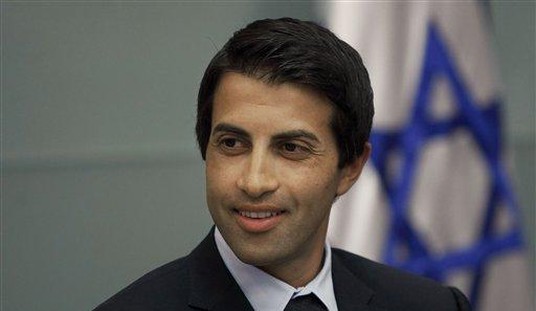Today President Obama described the steps he was taking in order to improve the defense against terrorism. The video of his remarks is below. His thesis is simple. Intelligence analysis failed. The raw data existed to potentially support pattern recognition, but nobody recognized the pattern. President Obama announced general steps to improve the analysis.
[youtube tDgeU_n8qxQ]
The second broad measure announced was an additional investment in newer and more stringent bomb detection technologies in aviation security. Taken together, both steps represent a lot of effort. If effort equalled effect, these two actions would be major initiatives. But will they be effective and what alternatives are there?
Intelligence analysis is probably the single least mechanizable aspect of the entire information analysis cycle. It relies on pattern recognition in an environment where enemy agents may have planted a variety of misdirections. When key information which may constitute the Rosetta stone for unlocking the puzzle is not available — or if the emergent threat pattern is not within the “training set” of the analysts then they’ll simply miss it despite their best efforts. Occasionally a maverick may have a flash of insight which lays the whole thing clear. But often luck is against them. Even the best analysts are only right some of the time. Much of the time intelligence agencies never see the future coming at all.
Israel failed to detect the onset of the Yom Kippur War. Although the Arabs had been planning for the attack since 1967, and “although numerous indicators outlined the Arabs intentions, it was only hours before the actual invasion that Prime Minister Mier agreed to a partial mobilization of the Israeli Defense Force.” This blunder nearly cost Israel its existence. At other times the critical pattern is concealed in a more easily recognizable one. It is inside covertext. The analyst sees and dismisses the superficial pattern and fails to penetrate into the inner one. The concealment of plans within cover stories describes how the Nazis, no slouches at intelligence and who were completely unhampered by any scruple whatsoever, signally failed to anticipate the Normandy landing sites, partly because of Allied misdirection. They were fed the half-true and consequently believed the false. In Churchill’s phrase, the landings were cloaked by a “bodyguard of lies”.
But the decentralized and complex nature of terrorist warfare creates particular challenges. It is no longer sufficient to break a central code or penetrate a unitary bureau. There is no single mind to get inside of. The modern enemy is a semi-chaotic force motivated with implacable hatred against the United States. In the face of this complex threat the more fundamental question is whether traditional bureaucratic analysis is capable of deciphering its attack patterns in the traditional ways. Eric Raymond argued that bureaucratic analytical processes could no longer understand complex environments. This lay behind not only the failure of the financial system to forsee the meltdown, but also underpinned the declining reputation of the traditional elites. Those elites were the sober dons of David Brook’s lore. But they were out of their depth. In this view, the problem with US intelligence lies not so much in its unwillingness to profile or even its proscription of it, but in its architecture.
One shakes one’s head in disbelief. Is there anything our “educated classes” can’t fuck up, any reality they won’t deny? Will Collier fails, however to ask the next question: why did they fail? The obvious and most tempting hypothesis for a libertarian student of history like myself is that the Gramscian damage caught up with them. …
I think there’s much more to it than that, though. When I look at the pattern of failures, I am reminded of something I learned from software engineering: planning fails when the complexity of the problem exceeds the capacity of the planners to reason about it. And the complexity of real-world planning problems almost never rises linearly; it tends to go up at least quadratically in the number of independent variables or problem elements.
I think the complexifying financial and political environment of the last few decades has simply outstripped the capacity of our “educated classes”, our cognitive elite, to cope with it. The “wizards” in our financial system couldn’t reason effectively about derivatives risk and oversimplified their way into meltdown; regulators failed to foresee the consequences of requiring a quota of mortgage loans to insolvent minority customers; and politico-military strategists weaned on the relative simplicity of confronting nation-state adversaries thrashed pitifully when required to game against fuzzy coalitions of state and non-state actors. …
The answer is, I think implied by three words: Adapt, decentralize, and harden. Levels of environmental complexity that defeat planning are readily handled by complex adaptive systems. A CAS doesn’t try to plan against the future; instead, the agents in it try lots of adaptive strategies and the successful ones propagate. This is true whether the CAS we’re speaking of is a human immune system, a free market, or an ecology.
Eric Raymond is very persuasive on the point. The problem is that what is required is agile networks but the bureaucrats are still building pyramids. If he’s right, then the “review” and guidelines issued by President Obama will have only a very small impact on the quality of US intelligence analysis, because if there’s anything the bureaucracy can’t stand, it is a complex adaptive system that can “try lots of adaptive strategies and [let] the successful ones propagate”. The lawyers won’t let them do it. It is anathema to the layers and layers of bureaucracy that have accreted over the years. One of the problems with US intelligence reform has been the tendency to fix intelligence failures by layering yet another process over it.
Richard Russell described the structure of US intelligence in 2004. It was a like a cake with process layered over process until it was 8 ranks deep. Writing for the Hoover Institution, Russell painted a picture of sclerotic and constipated process:
The Central Intelligence Agency is the “first among equals” in the intelligence community and deserves particularly close independent scrutiny. The agency benefits from a bureaucratic position that separates it from the pressures of policy interests to a far greater degree than its brother intelligence agencies. The CIA also uniquely benefits from its traditional privileged access to the president and his key national security lieutenants. Yet CIA’s support to the commander-in-chief over the past decade in major armed conflicts reveals a consistent pattern of shortcomings, particularly in regard to human intelligence collection. One of the starkest lessons to be gleaned from looking at past cia performance is that it has consistently failed to produce top-quality human intelligence against the greatest threats to the United States.
CIA suffers from a ponderous bureaucratic structure that makes it sluggish in response to events, impedes intellectual and analytic initiative, and diverts resources from nurturing and keeping analytic talent. The analytic side of the agency, the Directorate of Intelligence (DI), made a failed effort in 1996 to flatten the hierarchy. The well-intentioned effort to cut managerial levels in order to free up resources to devote to analytic talent was predictably suffocated by entrenched bureaucratic interests. Today, a working-level analyst is separated from the director of central intelligence (DCI) by about eight bureaucratic rungs. This is a far cry from the flat and flexible organizational charts of companies that thrive in the information technology era.
Analysis moves painstakingly slowly through the bureaucratic structure, and iconoclastic views that challenge conventional wisdom are very likely to have their edges substantially smoothed in the laborious review process. Analysts suffer considerable frustration. Their charge is to write analyses for the senior levels of the national security policymaking community. Even uncontroversial analysis suffers from pronounced dumbing-down effects as it passes up and through the chain of command. More often than not, policymakers are substantially more conversant with international issues than cia managers, who in the review act more as overpaid editors — without the technical expertise of professional editors — to make analysis more understandable for themselves rather than the far more expert consumers in the policy community.
The production of intelligence analysis takes the form of an inverted pyramid. One or a few junior analysts, for example, might draft a piece of intelligence analysis. It then passes through a chain of command loaded with GS-15 and Senior Intelligence Service (SIS) managers, who typically impose more stylistic than substantive changes. The piece of analysis then passes to a current intelligence staff stuffed with GS-15 or higher individuals, who further massage the analysis into stale and boring prose before publication in the President’s Daily Brief or the more widely disseminated Senior Executive Intelligence Brief.
The President’s Daily Brief travels with CIA briefers downtown each workday morning to be read by the president and his key national security policy advisers, including the vice president, the national security adviser, the secretaries of defense and state, and the chairman and vice chairman of the Joint Chiefs of Staff. On some occasions, the DCI may lead the president’s briefing team. The direct and personal provision of intelligence to the commander-in-chief gives cia the lead for strategic intelligence in the community. The CIA briefing teams are able to learn first-hand the policy concerns and intelligence interests of key policy players. The policymakers, in turn, are able to ask questions about raw intelligence reports and multi-source analyses as well as task CIA for follow-up or new analyses.
CIA briefers return from policy community runs to Langley each morning with tasking in hand. Unfortunately for analysts, that tasking slowly and laboriously flows down the chain of command, reaching them only late in the day. In many instances, analysts may be able to write a piece of analysis in relatively short order, only to be confronted with the time-consuming and cumbersome internal bureaucratic process. The wisest and most seasoned analysts opt to wait for managers to go home for the evening before drafting an analysis in order to avoid several rungs of review by the agency managers.
It is painful to even read. Watching President Obama’s efforts it is hard to avoid to avoid the feeling that it will go the way of so many in the past. A new process will be invented. More ceremonies will be performed. Incense will be burned before the appropriate gods. The bureaucracy will try mightily to lay the egg, but in the end, despite best efforts things will not improve that much. What may actually help is giving lower levels more autonomy, letting them take risks even at the cost of making mistakes. But in an atmosphere of legal procedure where the incentives are adapted to the law enforcement model, where lawyers are king, there may little hope of that.










Join the conversation as a VIP Member